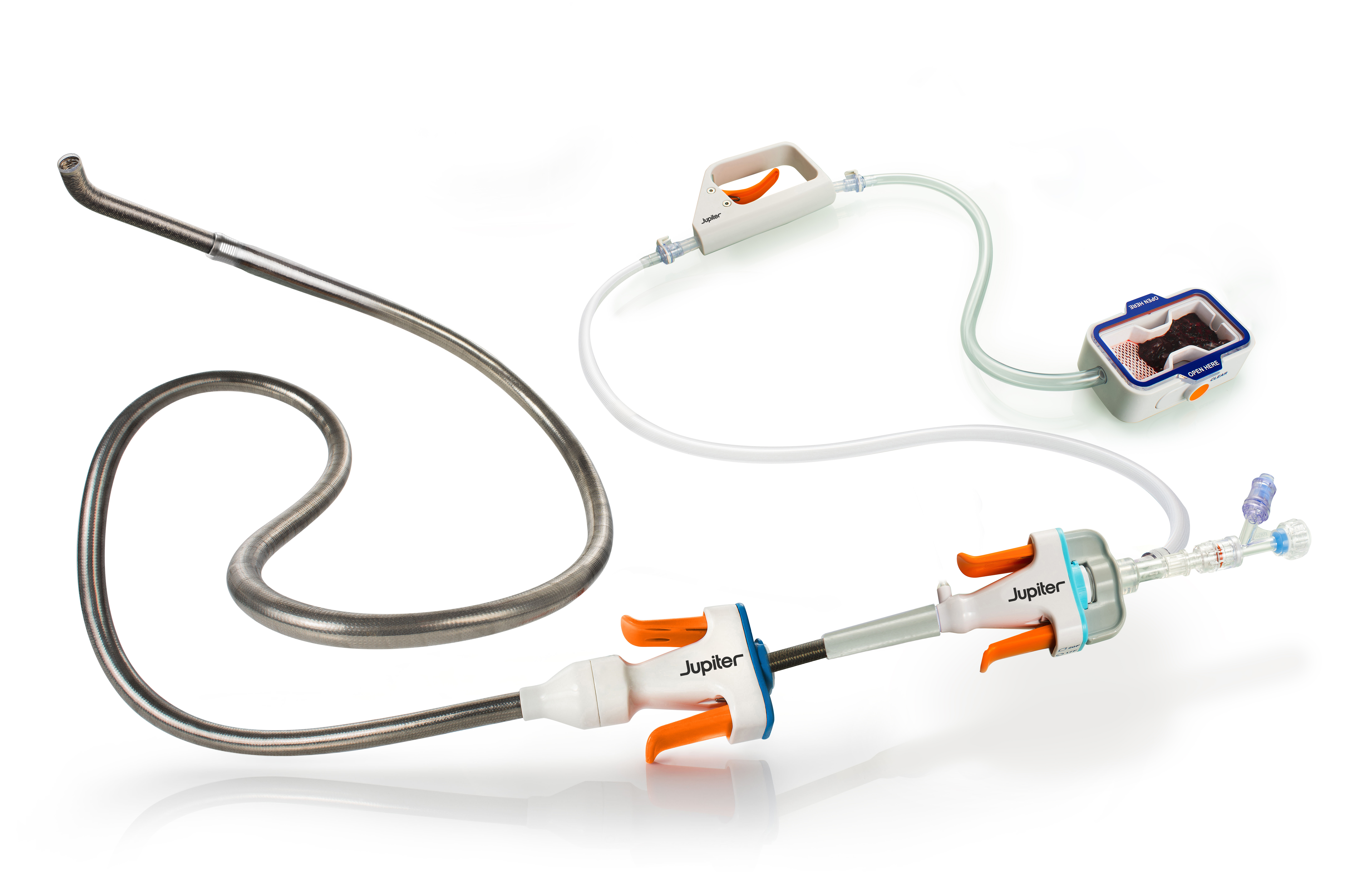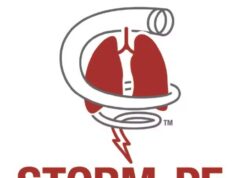
Jupiter Endovascular has announced that the first two patients have been treated in SPIRARE I, a multicentre study of the Vertex pulmonary embolectomy system using the company’s Endoportal Control platform technology.
The Vertex system is designed to treat acute pulmonary embolism (PE) in an endovascular procedure. The successful first two cases were performed at St John Paul II Hospital in Krakow, Poland, a cardiothoracic specialist centre affiliated with the Jagiellonian University, by study investigators Grzegorz Kopec, Jakub Stepniewski and Krzysztof Bartus.
“In these first cases, the Vertex system was successful in safely navigating through the right heart and into the pulmonary vasculature, facilitating an efficient and effective pulmonary embolectomy with no safety issues,” said Kopec, who is the head of the team for the diagnosis and treatment of pulmonary circulatory diseases at St John Paul II Hospital. “The patients’ clinical condition and haemodynamics improved on the table during the procedure, and postoperative imaging showed noticeable improvements in right heart function.”
“Controlling interventional devices within the pulmonary arterial tree when treating patients with intermediate-risk and high-risk PE can be challenging with today’s commercially available technology,” said Stepniewski, the Pulmonary Embolism Response Team (PERT) coordinator at St John Paul II Hospital. “The endoportal technology enabled the large-bore Vertex system to remain stable in tachypneic patients, allowing us to quickly access and revascularise multiple areas of the pulmonary vasculature in a controlled manner when facing a high degree of cardiorespiratory movement.”
“I was pleasantly surprised that the endoportal technology provided a level of control similar to what I experience in an open surgical embolectomy, with the added ability to directly access a much wider range of vessels,” said Bartus, professor of medicine at the Jagiellonian University, St John Paul II Hospital. “My team and I are very excited about studying a new technology with the potential to give us greater stability and control when treating pulmonary embolism, which may have a positive impact on patient outcomes. As a principal investigator of this study, I want to thank the Jupiter Endovascular team, Professors Boguslaw Kapelak, Jacek Legutko, and Piotr Podolec from our hospital, and director of the hospital Doctor Grzegorz Fitas, for their help and support in this first-in-human clinical trial.”
SPIRARE I is a prospective, single-arm, multicentre study enrolling patients with acute, intermediate-risk PE treated with the Vertex pulmonary embolectomy system.
In addition to St John Paul II Hospital, the Medical University of Vienna is planned to be a second study site, with Irene Lang serving as the principal investigator for that site.
Trial endpoints will characterise the procedural and clinical benefits of PE treatment with Endoportal Control using the Vertex system, across measures of safety, right heart function, and clinical improvement from the time of the procedure to 30 days post-procedure.
The company’s Endoportal Control platform technology integrated into the Vertex system is designed to bring greater stability to a variety of catheter interventions, with the goal of enabling interventionalists to treat anatomical sites that they cannot safely or easily reach with a conventional endovascular approach, Jupiter Endovascular says in a press release. The endoportal device is delivered in a flexible, relaxed state over a guidewire to a target location in the vasculature, pressurised with saline to fix it in a stable position for therapeutic delivery, then relaxed again to navigate to another target location or for removal.
“We are delighted with the performance of our technology in these first two cases, demonstrating safe access and the ability to bring a high degree of precision and control to the successful treatment of these patients with intermediate-risk pulmonary embolism,” said Carl J St Bernard, Jupiter Endovascular CEO. “As the first step in our SPIRARE clinical program, we look forward to validating these positive results more broadly in this study and in the upcoming SPIRARE II pivotal trial, as well as to expanding the potential benefits of our Endoportal Control platform technology to additional clinical areas where we intend to improve the lives and well-being of many patients.”













